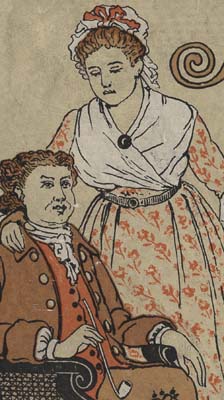
American Taste & Tradition
![]()
America's first European colonists encountered a continent already peopled
with native food cultures and traditions, but they brought their European
tastes and food conventions with them.
Although there were plenty of edible plants and animals here, American colonial food remained grounded mainly in British traditions until well into the 19th century—dominated by meats and breads, with very little use of fruits and green vegetables.
American food began to distinguish itself from its European and British origins at the end of the 18th century, as the young nation developed its own cultural, political, and domestic traditions. Soon, American cookbooks would reflect the use of bountiful native ingredients, such as corn, squash, and cranberries.
Until the last decades of the 19th century, most American cookbooks emphasized practicality and economy over luxury and elegance. The often primitive conditions of rural and frontier life demanded a survivalist approach to cooking and domesticity. Toward the end of the century, however, food habits came to reflect the country’s growing prosperity, with an increasing interest in French cooking, elegant entertaining, and fine dining.
 |
||

Copyright
© 2002 Division of Rare & Manuscript
Collections
2B Carl A. Kroch Library, Cornell University, Ithaca, NY, 14853
Phone Number: (607) 255-3530. Fax Number: (607) 255-9524
For
reference questions, send mail to:
rareref@cornell.edu
If you have questions or comments about the site, send mail to: webmaster.